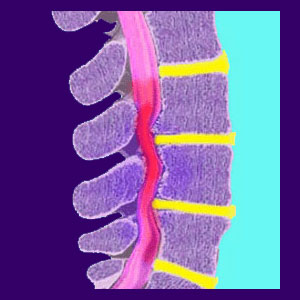
I have read lots of medical studies about accurate back pain diagnoses, and other creatures of legend, but I have rarely seen correct diagnosis occur in my almost 30 years of involvement in the dorsalgia treatment sector. Now, please, do not get me wrong here. I see back pain diagnosis occur every day. However, the crucial missing word is “accurate”, when it comes to the validity of said diagnostic theories.
From my own extensive experience battling chronic back and neck pain, to the professional experiences provided by our excellent editorial board members, to the letters we receive from you daily, one thing is absolutely clear and indisputable: Back pain is rarely diagnosed correctly and this is the fundamental reason why the condition has grown like wildfire, reaching epidemic levels worldwide.
Accurate Back Pain Diagnoses Stats
Statistics clearly show that the diagnosis of a great number of potential causes of back pain is on the rise year after year. This is not subject to any speculation. Every passing year, more and more people are stricken with chronic and debilitating back problems and very few recover.
This horrible propagation of suffering continues unchecked, despite the statistical fact that more patients are in ongoing professional treatment for their back pain than ever before in history.
It is rather ironic that if one looks at a historical graph of patients who are affected by pain, cross-referenced with those who are in treatment, you will surely discover that there is a definitive correlation. However, this correlation is not what anyone of logical mind would ever expect.
Usually, when people seek treatment for a health problem, the rate of patients who continue to be affected by their pain goes down as the rate of patients in treatment goes up. In essence, people enter professional care, get better and move on with life. They are cured. It makes sense.
However, when it comes to back pain, the opposite trend has been occurring for decades. Statistics show that the more people who enter treatment, the fewer actually recover and the more new cases of pain are reported. This makes no sense.
It seems like the actual treatment protocol is not only falling to cure presently affected patients, who continue to suffer, but it is also somehow contributing to the ever-growing number of new patients who subsequently enter care, without success.
What is going on here?
Inaccurate Back Pain Diagnoses
Looking at the medical literature concerning back pain, one would most likely assume that the inadequacies of the treatments, that are being used to combat the ravages of dorsalgia, are the main reasons why patients do not get better. This is at least partially, if not wholly incorrect, in most circumstances.
Medical and complementary treatment is usually not too far off base, given the assumption that the diagnosis is correct. This is the key point to consider.
If the diagnoses were right, then logic would dictate that patients would get better. Patients do not get better, so reverse logic tells of a troubling truth:
Most chronic pain is misdiagnosed. In my almost 3 decades of work as a patient advocate, I find this to be virtual law.
Misdiagnosis will fail patients who are in treatment, since therapy will not be targeting the true source of pain. It will also cause the public to suffer a nocebo effect concerning the incorrectly theorized causes of pain, which just happen to be universal human conditions.
Degenerative disc disease, osteoarthritis and intervertebral herniations are not only commonplace; they are virtually universal in all adults.
The lesson here is that by mistakenly vilifying these completely normal and expected parts of aging, almost everyone is eventually diagnosed, and almost everyone seeks treatment, which will fail.
No wonder statistics clearly show that over 80% of all adults suffer from serious back pain during life. No wonder back pain is the single most cited reason for missing work. No wonder back pain is the second most prevalent reason for doctor visits worldwide. All these statistics are products of the modern medical system, as back pain is virtually absent in medical literature prior to 1950.
Accurate Back Pain Diagnoses Can Exist
Incorrect diagnosis leads to incorrect and unenlightened treatment. Worse still, as these treatments fail, the level of invasiveness and risk associated with ever more drastic therapies increases.
In so many cases, the most lasting negative effects of back pain are not due to the condition itself, but instead are caused by surgical barbarisms that are directed at treating the wrongly diagnosed structural issues, which are not even the actual symptomatic source. This ridiculous battle against back pain has become one of the most sinister and embarrassing scars on the medical industry in thousands of years.
Diagnostic processes must be fixed, if patients are ever going to actually recover from chronic pain. 7 decades of ever-growing numbers of patients, and fewer cures, is more than enough already.
How many more lives must be ruined? How many more need to suffer?
Well, I guess that just depends on the continuing profitability of the back pain treatment sector. Being that it is at an all-time high, despite the worst historical results ever, things are not likely to change for a very long time.
Back Pain > Back Pain Epidemic > Accurate Back Pain Diagnoses and Other Creatures of Legend





